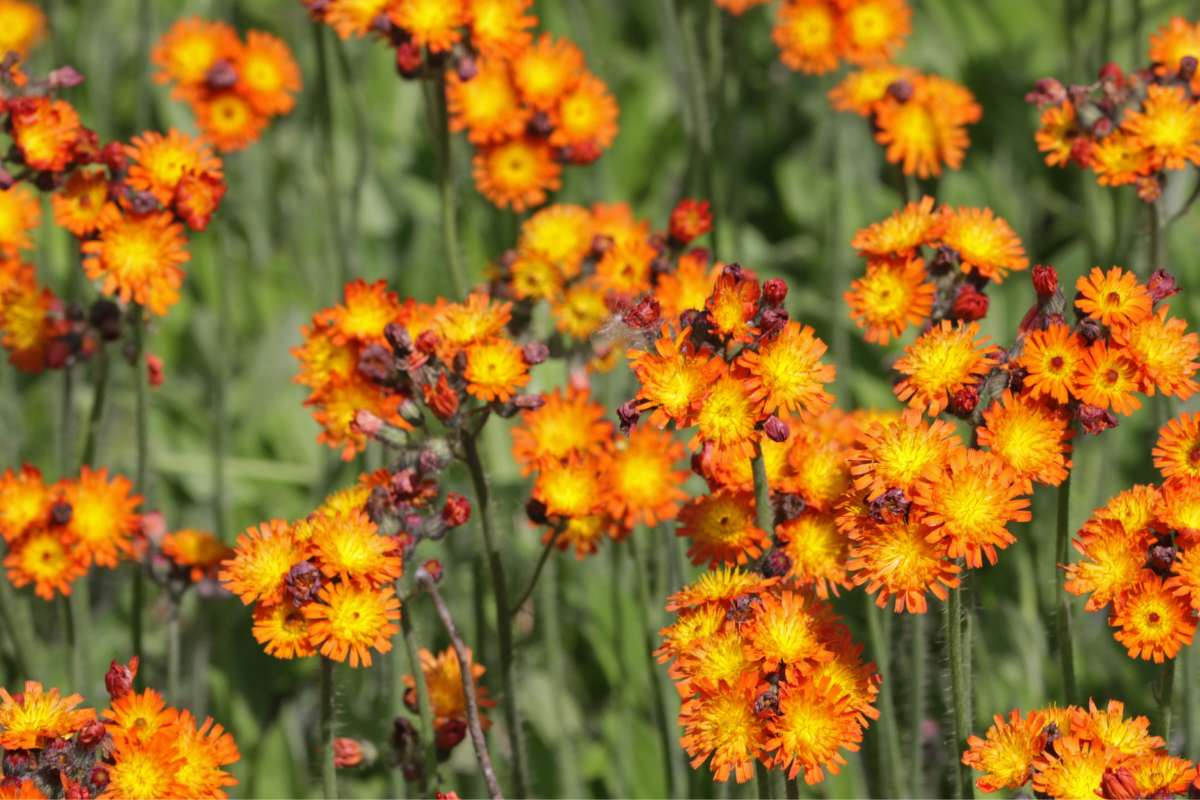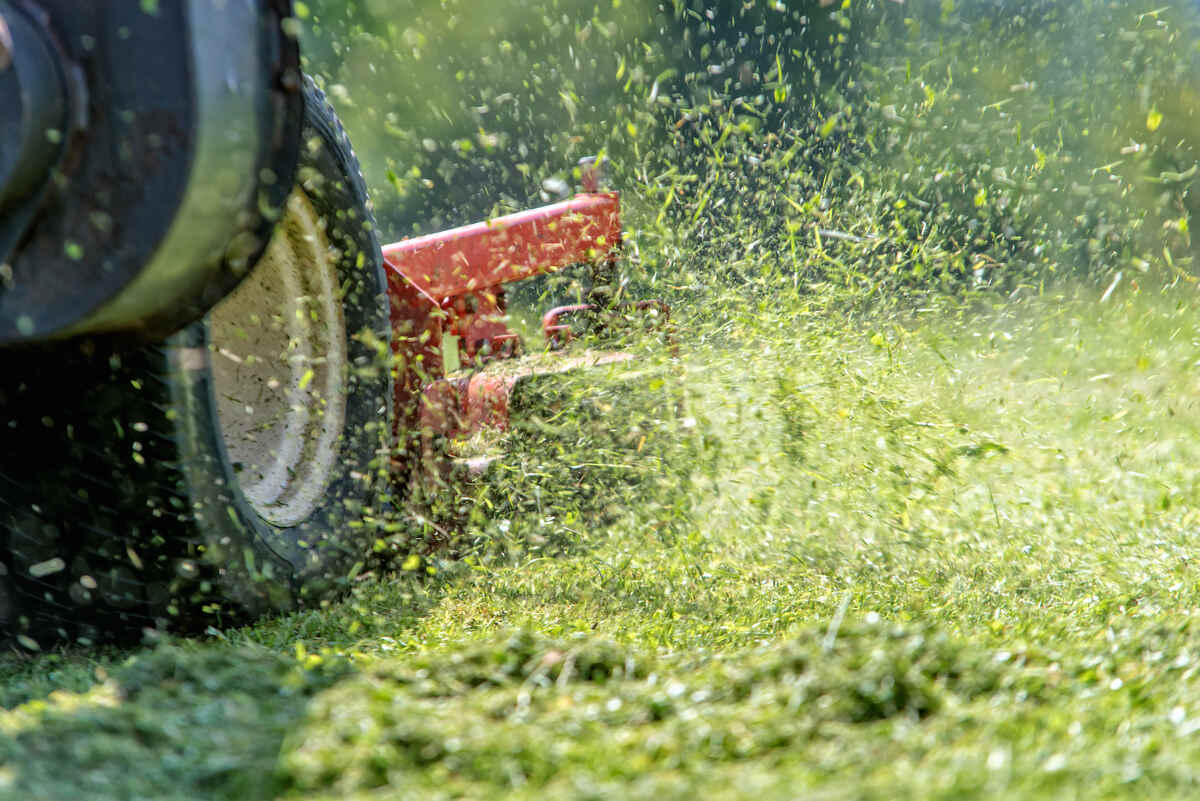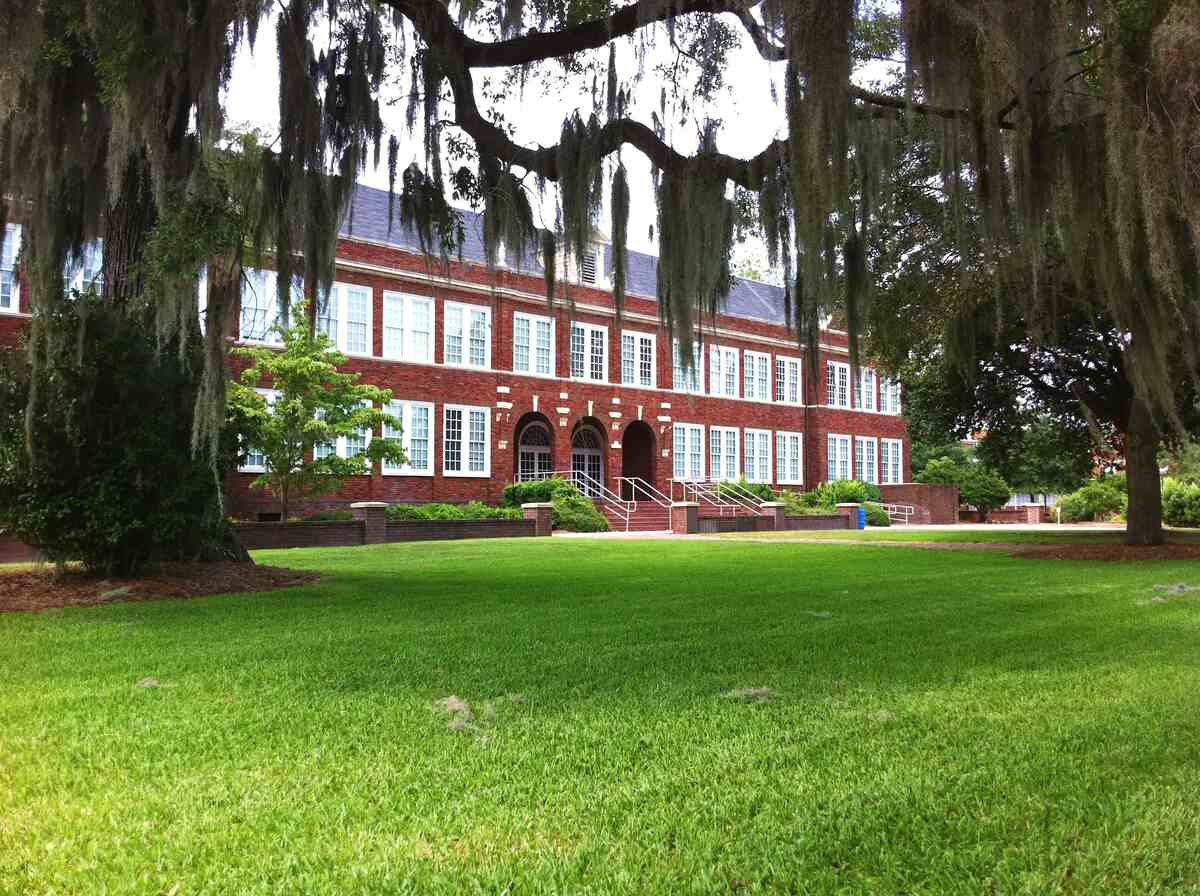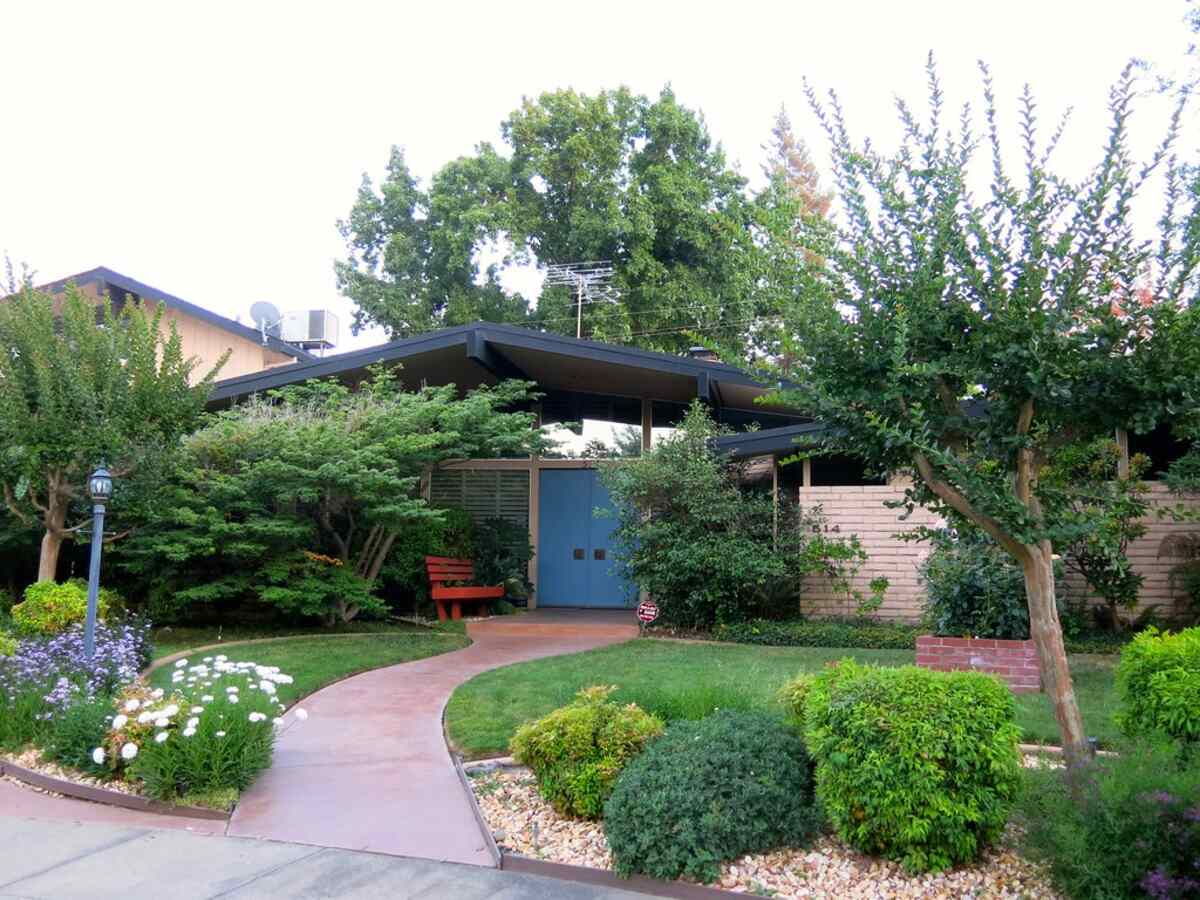
Taking care of your lawn in the summer can be especially difficult as Sacramento continues to deal with drought conditions. But there are simple things you can do to help your lawn grow strong and healthy while conserving water and resources. To have a healthy and resilient landscape, follow these eight summer lawn care tips for Sacramento.
1. Know Your Grass
When it comes to taking care of your lawn in the summer drought conditions of Sacramento, you want to be sure to know your grass type.
Some lawns in Sacramento use warm-season grasses, but others use cool-season grasses. When it comes to summer, they are on different growing cycles. Below we’ll detail the differences between the two grass types and which are the 6 Best Grass Types for Sacramento, CA.
Warm-Season Grasses
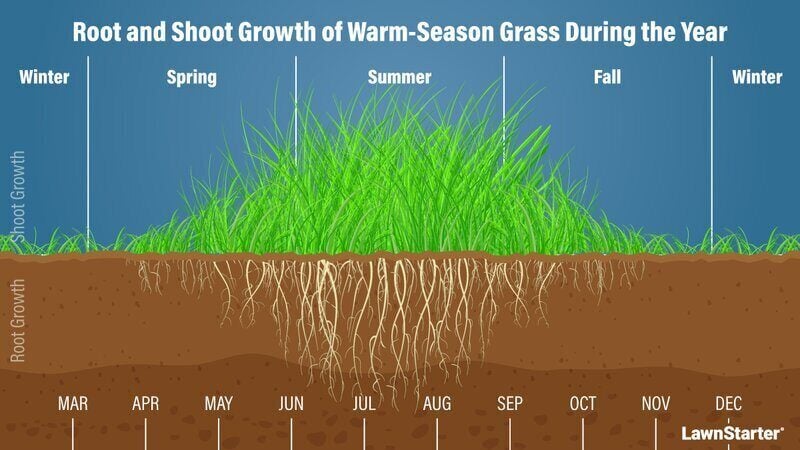
Warm-season grasses are a common choice in Sacramento because:
- Heat is something in which they thrive.
- Drought: Warm-season grasses handle drought better than cool-season grasses.
- Maintenance: They need less fertilizer, making them easier to maintain
Warm-season grasses common to Sacramento: St. Augustinegrass, Bermudagrass, Buffalograss
Cool-Season Grasses
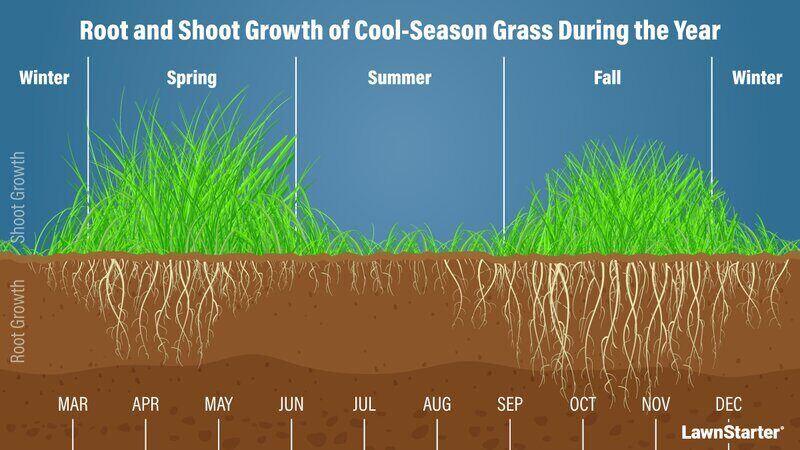
Cool-season grasses are the choice because:
- Two growing seasons, in the spring and fall.
- Dormant in summer. If it gets too hot or the drought conditions rise too high, cool-season grasses can go dormant, which enables them to survive until fall.
- Green in winter. Unlike warm-season grasses, that will go dormant after the first frost.
Cool-season grasses common to Sacramento: Tall fescue, Kentucky bluegrass, perennial ryegrass
For more information: If you’d love more information on how to care for your Sacramento lawn in fall or spring, check out our other guides below:
2. When and How to Water
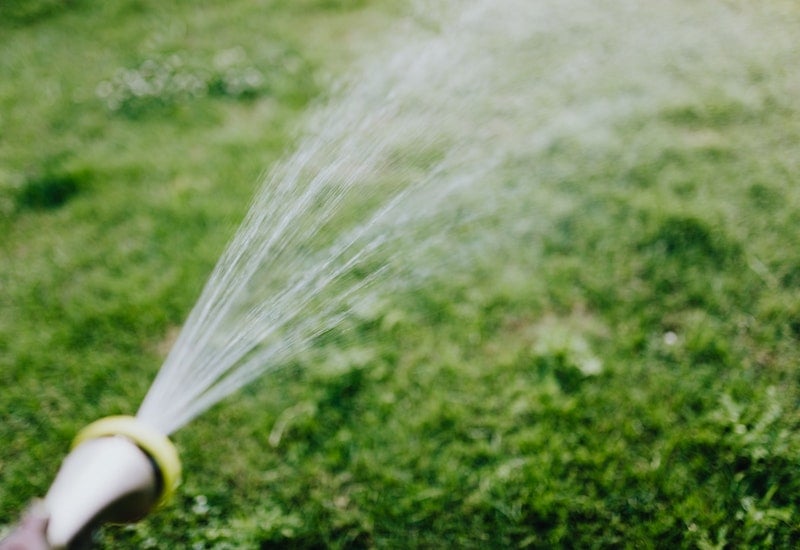
Even during times of drought, you will need to water your lawn in the summer. The city of Sacramento has an ordinance on water use that establishes a watering schedule and watering guidelines for residents.
Here are specific ways Sacramento homeowners can conserve water in their lawns:
- Drip irrigation is currently allowed at any time. Drip irrigation is especially effective at conserving water, both for ornamental plants and for lawns (subsurface drip irrigation).
- A hose with a spray nozzle can be used at any time (as of this writing).
- Smart controllers can be used at any time, but they must be approved by the city.
- Potted plants allow you to water a small, targeted area.
- Edible gardens help you grow your own food.
Something to consider: Painting the lawn green. Golf courses have long done it. It might be time for you to do it to your lawn.
Measure the Amount of Water Your Lawn Is Getting
Know how much water your sprinklers put out to use only the amount your lawn needs and no more.
- You can buy a rain gauge. They can cost less than $10, though you might want to place several around your yard, increasing the expense.
- You can improvise your own. Place some straight-sided cans (tuna cans are just right) around the yard to audit your water usage.
A pro’s tip: Be sure to audit a drip irrigation system, too. They can become clogged, or have parts that need to be replaced.
3. Mowing
You should know the one-third rule as you operate your mower, and follow it.
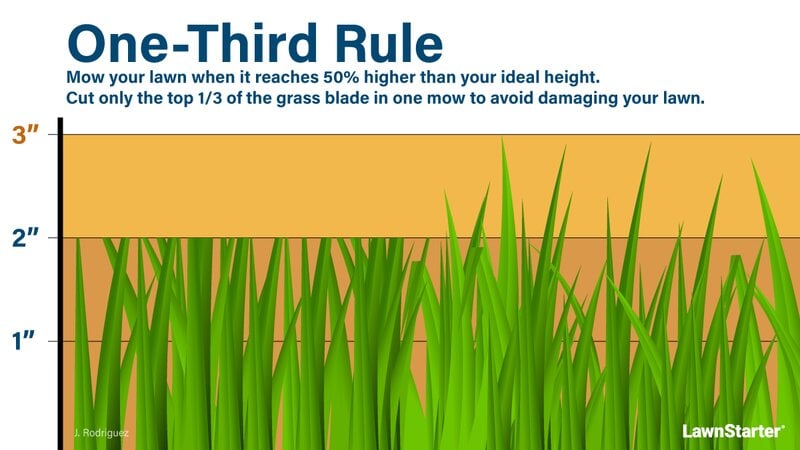
Mowing Heights in Summer
| Grass Type | Mowing Height (inches) |
| Bermudagrass | 0.5 to 2.5 |
| Buffalograss | 2 to 3 (or leave unmowed) |
| Kentucky Bluegrass | 2.5 to 3.5 |
| Perennial Ryegrass | 1.5 to 2.5 |
| St. Augustinegrass | 1 to 2 |
| Tall Fescue | 2 |
Mowing Frequency
- Warm-Season Grasses: Plan to mow weekly in the summer.
- Cool-Season Grasses: Every other week. If the lawn becomes dormant, don’t mow at all. It likely will start growing again late in the summer; resume mowing then.
4. Look Out for Pests
Summer is the time of year that can bring out pests:
- Armyworms. They feed in the daylight, and act fast.
- Billbugs. Small weevils that affect all grasses. Grass turns brown. Areas of dying grass start small and are irregular in shape.
- Chiggers. They may transfer from the lawn to you.
- Chinch bugs. They will suck the juices from the grass and replace it with a toxin that could turn the lawn yellow.
- Cutworms. They feed on the grass at night.
- Fire ants. They are aggressive, inflicting a painful sting.
- Fiery skipper. Spots an inch or two large turn brown and die. They may come together to form larger patches.
- Fleas. They may transfer to a pet.
- Grubs. Patches on the lawn turn brown and are easily pulled up.
- Lawn moths. They chew or chew off leaves of grass.
- Ticks. One or two turn up regularly. A bunch might mean an infestation.
- Two-lined spittlebug. They suck out the juice of the grass, which turns it yellow or brown as it dies.
The Most Dangerous Pest for a Sacramento Lawn
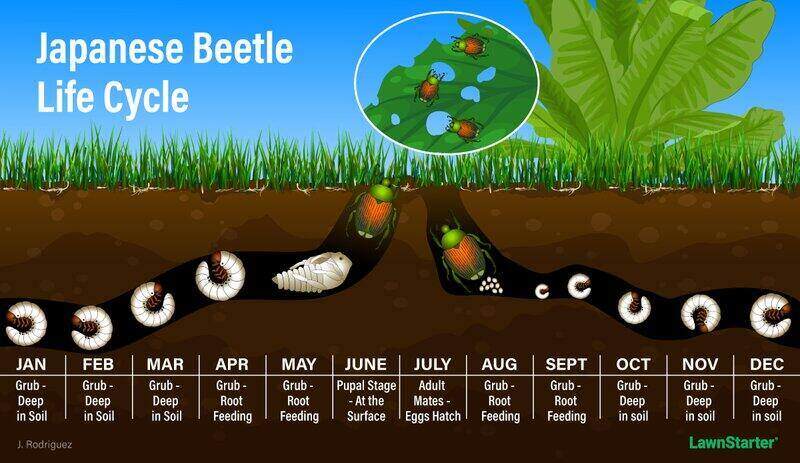
Grubs are known to be a problem in Sacramento. Grubs are the larval stage of beetles, and will quickly get out of control. One reason they are proliferating is that the damage from grubs (brown, thinning turf) looks much like the damage from drought.
Signs you have grubs:
- Dead patches of turf start appearing and get larger.
- Grass will pull out easily at the roots.
- Animals dig at your lawn, such as skunks, raccoons, moles, and even crows.
- Insects appear, with beetles and moths flying close to your lawn (looking for a place to lay their eggs)
- A bounce to your step when you walk on the lawn.
A pro’s tip: To test for grubs, dig up a 1-foot section of the lawn (you can use a trowel; you don’t need anything fancier). If you find ten or more grubs, you have a major infestation. Get rid of grubs yourself or hire a professional service.
Sacramento has been battling the grubs of a particularly invasive insect, the Japanese beetle, for the last decade. In their native Japan, they have natural predators that they don’t have in the U.S.
5. Overseeding in the Summer
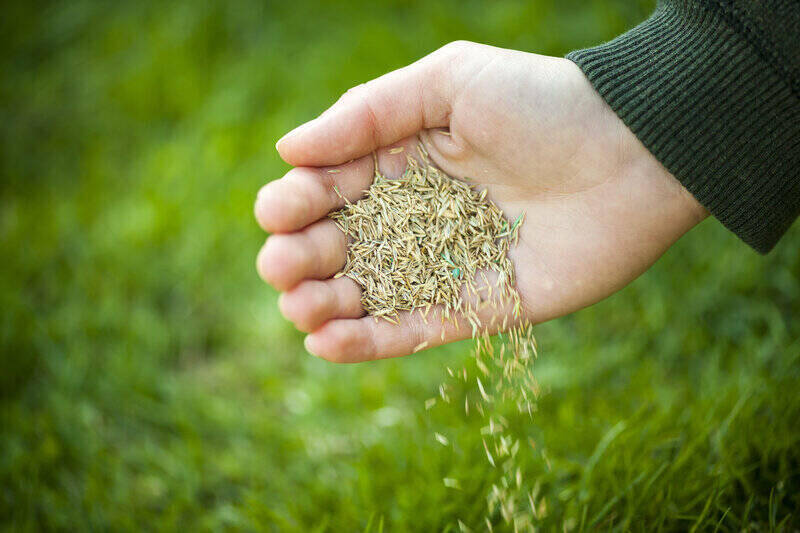
Summer can be a good time for overseeding. Overseed warm-season grasses in late spring or early summer. Overseed cool-season grasses in late summer or early fall.
- Cool-season grasses are going dormant.
- Warm-season grasses are growing slower in the heat.
- Weeds are growing less in the heat, too.
The steps for overseeding in the summer:
- Cut the grass shorter than usual, down to an inch in height.
- Rake to dethatch the area
- Spread topsoil, using a fertilizer spreader.
- Distribute the seed, again using a fertilizer spreader.
- Apply fertilizer, using the same spreader.
- Water the lawn. Remember, new landscaping may be excepted from the water regulations.
6. Fertilizing the Lawn in the Summer
The key to fertilizing your lawn is to do it at the right time of year:
- Warm-season grasses should be fertilized early in the summer, no later than early June. After that, the heat is too much.
- Cool-season grasses should not be treated at all during the summer. Wait until the end of October or early November.
7. When to Aerate
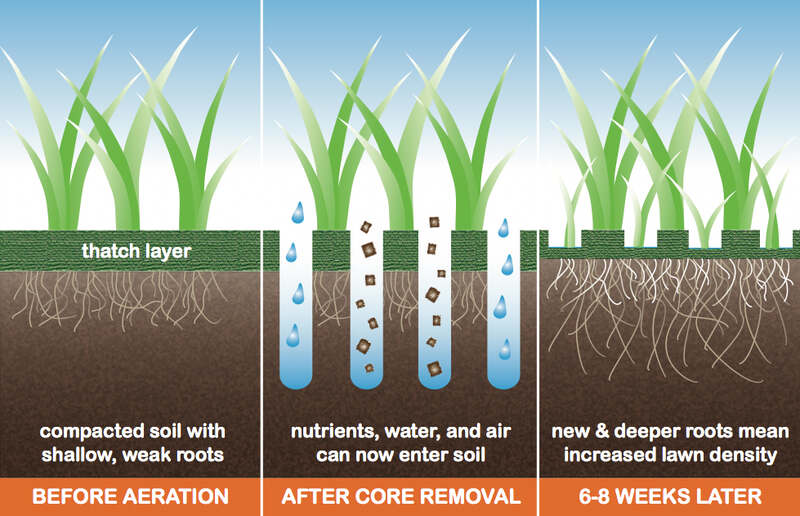
Aeration can help a lawn, but should be done at the height of the growing season for your grass:
- Warm-season grasses can be aerated during the early summer, which is part of their active growing season.
- Cool-season grasses might be damaged if aerated during summer. Instead, any aeration should occur during the early spring or fall during a period of active growth.
You might have a lawn that needs aeration:
- If you check the root system: Dig out a square foot of lawn that is six inches deep. If the roots go down only a few inches, you should aerate.
- If the lawn is used a lot, especially by children or pets, it will become compacted. In that case, aeration helps.
- If the thatch is more than 1/2 inch. It builds up quite a bit on Kentucky bluegrass, Bermudagrass, and St. Augustinegrass, common grasses in Sacramento.
- If the lawn sits on heavy clay soil. Sacramento, like so much of California, is known for its clay soil, with the county providing maps by neighborhood.
8. Basic Lawn Care Service Costs
A LawnStarter study has found these lawn care costs:
| Lawn Care Service | Average Cost |
| Mowing | $29 to $65 |
| Aeration | $75 to $225 |
| Dethatching | $190 per hour |
| Fertilizing | $20 to $60 per hour |
| Seeding | $336 to $1,010 |
FAQs
No, post-emergent herbicides should be used in cool weather. The heat of the summer months in Sacramento will limit their effectiveness, so it makes more sense to apply them in the spring or fall while the weeds are still small.
Yes, there are many benefits to mulching grass clippings onto your lawn. Not only will mulching help to prevent erosion when it comes to your lawn, it will also help keep the soil cool in that hot summer climate.
At that point, just let it be. Don’t make the mistake of trying to water it back to life; it won’t work. Just wait, and when the weather turns, it will start growing again.
A Call to Action
Whether you’re a new homebuyer or you’ve enjoyed the same yard and home for years, tending to your lawn for hours in the sun might be the last thing you want to do.
So let our lawn care experts take care of your yard for you. Hire a Sacramento lawn care professional who will mow, fertilize, and aerate your lawn. A professional can also help with weed control, lawn maintenance, lawn needs, and lawn care.
When it comes to the climate in Sacramento, you know drought conditions are going to continue for some time. Review your options. Decide if you will undertake do-it-yourself projects, or will be better served by bringing in lawn care companies. But these times call for you to make a decision.
Main Image Credit: he who would be lost / Flickr / CC BY-ND 2.0


